On this week's NewsFlash we discover a promising treatment for Parkinson's disease, find out why eating fish oil has a 'catch', and that Frankincense may be a sweet smelling treatment for bladder cancer. Plus, this week in science history sees the discovery of the gene responsible for Huntington's disease.
In this episode
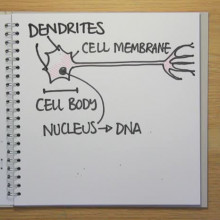
Researchers stimulate Parkinson's Breakthrough
Scientists have stumbled upon a new way to help patients with Parkinson's to move more easily.
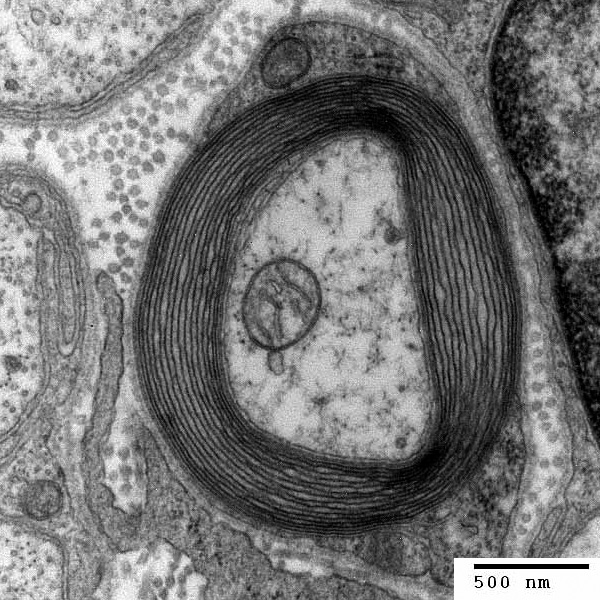 Writing in this week's Science, Duke University researcher Miguel Nicolelis and his colleagues have used experimental animals to show how a simple nerve stimulation technique can overcome the symptoms of the disease.
Writing in this week's Science, Duke University researcher Miguel Nicolelis and his colleagues have used experimental animals to show how a simple nerve stimulation technique can overcome the symptoms of the disease.
Patients with Parkinson's, which is caused by the loss of brain cells that produce the transmitter chemical dopamine, characteristically develop symptoms of slow movements and also find movements hard to initiate. The symptoms can be partially overcome with drugs including L-DOPA, which works by boosting brain dopamine levels, although the treatment tends to become less effective with time and can also cause significant side effects. In recent years scientists have been able to provide some relief to sufferers by implanting stimulating electrodes deep within the brain to increase the activity in the neural circuits that control movements. However, this surgery is highly invasive and therefore risky. Instead Nicolelis and his team took a different approach. They implanted epidural stimulators in the main sensory pathway of the spinal cord and found that animals previously paralysed by the disease showed a remarkable improvement in symptoms. "We see an almost immediate and dramatic change in the animal's ability to function," says Nicolelis. The team think that the approach, which is much simpler and safer than implanting electrodes deep in the brain, works by blocking abnormal patterns of brain activity seen in the disease. The team think that waves of nerve activity caused by the synchronous firing of many different nerve cells build up and make it very difficult for the brain's motor circuits to initiate movements. But stimulating the sensory pathways three hundred times per second disrupts these neurological oscillations resulting in Parkinsonian animals showing twenty-six times more spontaneous movement than untreated controls.
"Following stimulation the neurons desynchronise resembling the firing pattern you would see in a healthy mouse is continuously moving," says study co-author Per Petersson.
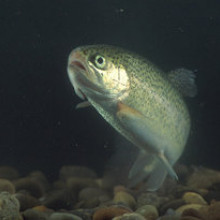
Omega 3 – It might be good for you, but it’s definitely bad for fish
The health benefits of eating the Omega-3 amino acids found in fish may not outweigh the cost to the oceans of our continued fishing, according to an analysis in the Canadian Medical Association Journal this week.
Dr David Jenkins argues that although some studies show that eating fish rich in Omega 3 oils can prevent heart disease and other chronic illnesses, the evidence is not hugely convincing compared to the evidence for the dramatic falls in fish stocks worldwide.
Looking at the results from many individual studies, along with meta -analyses which themselves take many studies into account; they found that there is a suggestion that higher Omega-3 consumption could lead to a 15% benefit in the prevention of cardiovascular disease. Some of the studies they looked at found benefits in only a few situations, and follow up studies occasionally showed the benefit to have reversed 3 years later.
In contrast, the evidence for falling fish stocks and collapsing populations is as compelling as it is frightening. Fish catches have not increased since the early 1990s, despite increased fishing effort, and the percentage of collapsed stocks has been increasing exponentially since the 1950s.
There are also socio-economic factors to consider, such as the fact that collapsed fisheries in the United States, Europe and Japan mean that these countries are increasingly relying on importing fish from developing countries. This means that these countries either have to allow foreign fishing fleets into their waters, or export their fish to foreign markets, depriving local communities of an important source of protein. Food security is just one contributing factor to political and social instability, and these countries often face nutrition and health challenges.
Even farming fish may not be the solution. To farm Salmon, Blue fin Tuna or Sea Bass, you need to feed them a high-protein diet of fishmeal and fish oils - ironically, farming fish puts even more pressure on wild fish stocks, and it actually takes between 2.5-5kg of feed fish for every 1kg of farmed fish produced.
There is a potential solution - bacteria, and genetically modified yeasts and plants may be able to supply our Omega-3 needs, but these sources have not been properly investigated to determine what doses would be healthy, and cannot yet supply the demand.
The report concludes by saying: "Until renewable sources of long-chain omega-3 fatty acids become more generally available, it would seem responsible to refrain from advocating to people in developed countries that they increase their intake of long-chain omega-3 fatty acids through fish consumption."
Food for thought.
Ref: David J.A. Jenkins, John L. Sievenpiper, Daniel Pauly, Ussif Rashid Sumaila, Cyril W.C. Kendall, Farley M. Mowat , Are dietary recommendations for the use of fish oils sustainable?; Canadian Medical Association Journal; March 17, 2009; 180(6); pp. 633-637
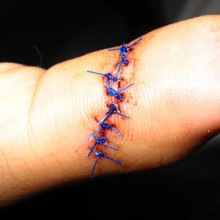
Sutures of the future
Sutures of the future might well be deployed by a portable ink-jet printer according to scientists in the US. University of North Carolina at Chapel Hill researcher Roger Narayan and his team, with a view to finding better ways to close wounds, have been investigating the sticking power of a collection of proteins used by marine mussels to anchor themselves to the seabed.
 As anyone who has ever tried to prise a mussel off a jetty or a rock knows only too well, these proteins are extremely powerful adhesives. "They're based around the amino acid DOPA," explains Narayan, "and because they are a naturally-occurring protein mixture they are likely to be much better tolerated by the body than sutures or artificial tissue glues like cyanoacrylate (superglue) which has been used in the past but can cause toxic effects and doesn't break down in the body". But a key question is how to utilise and deploy these sticky molecules to get them into wounds or surgical sites so that they can join tissues together.
As anyone who has ever tried to prise a mussel off a jetty or a rock knows only too well, these proteins are extremely powerful adhesives. "They're based around the amino acid DOPA," explains Narayan, "and because they are a naturally-occurring protein mixture they are likely to be much better tolerated by the body than sutures or artificial tissue glues like cyanoacrylate (superglue) which has been used in the past but can cause toxic effects and doesn't break down in the body". But a key question is how to utilise and deploy these sticky molecules to get them into wounds or surgical sites so that they can join tissues together.
Writing in the Journal of biomedical Materials Research B, Narayan and his colleagues may have found the answer - an ink-jet printer head. This uses a vibrating piezo-electric crystal to spit out tiny droplets. The team have found that mixing small amounts of iron ions with the mixture results in a very strong glue, probably by encouraging the mussel proteins to stick to surrounding tissue rather than itself.
"You can foresee hand-held devices in the future that could spray the correct combinations of the glue mixtures onto wound surfaces," says Narayan. "The use of the inkjet technology gives you greater control over the placement of the adhesive. This helps to ensure that the tissues are joined together in just the right spot, forming a better bond leading to improved healing and less scarring."
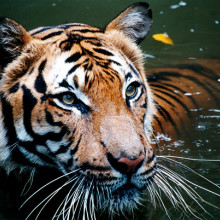
Tiger Stripes As ID
New Software can identify a tiger from its pelt, helping to catch poachers out in the act.
 A tiger's stripes are unique, much like our own fingerprints, so this means that individual tigers can be identified from its colouring.
A tiger's stripes are unique, much like our own fingerprints, so this means that individual tigers can be identified from its colouring.
Lex Hiby, from Conservation Research Limited, has developed a software system that uses images taken by camera traps, and stitches photos together to build a three-dimensional map of the markings, all the way from the neck to the base of the tail. This 'map' can not only let us identify individual animals in the wild - helping to get accurate population numbers, but can also be flattened and used to identify skins traded on the black market. This has the added benefit of knowing where and since when the tiger was killed, helping trap poachers in the act.
It's an accurate technique too. From a collection of between 264 and 298 tigers, the software correctly matched 95% of images that belonged to the same animal.
The idea behind this, using pattern recognition to identify individual animals, has been used for several different species, such as grey seals, cheetahs, penguins and whale sharks. The beauty of pattern recognition is that you do not need your photos to be uniform. In fact, tourist photos have been used alongside those taken by researchers to show that numbers of whale sharks have increased by 1.7% over the last 12 years, according to Jason Holmberg of research organisation Ecocean.
Hiby is confident that this software could make the backbone of a central database, as he writes in this week's biology letters:
"An image of a skin that had been taken from one of the tigers in that database could be traced within a few minutes to where and when the living animal was last recorded." It's a simple software solution to help in the fight to protect this endangered species.
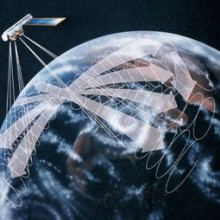
12:26 - Prospecting the Gravity Field
Prospecting the Gravity Field
Chris Hughes
Chris - Also this week, the European Space Agency has launched the Gravity field and steady-state Ocean Circulation Explorer, or GOCE for short. They say it's going to bring about a whole new level of understanding of one of the Earth's most fundamental forces of nature: the gravity field. Dr Chris Hughes, from the Proudman Oceanographic Lab, is down here on Earth with us and is planning to use the data from GOCE to better understand the world's oceans. Hello Chris. Welcome to the Naked Scientists. Tell us, what is GOCE? How does it work?
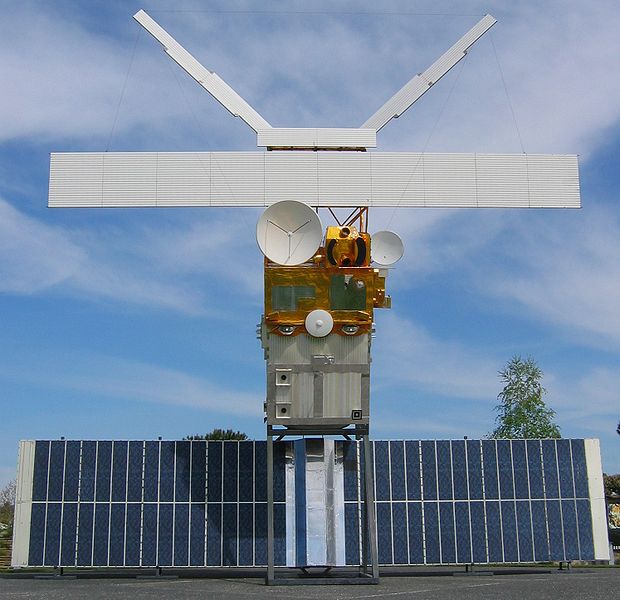 Chris H - If you imagine having six metal cubes in a box in orbit round the Earth. Because they're all in slightly different places, in slightly different bits of the gravitational field they move differently. Ideally what you'd want to do is track them and measure the relative motion. That tells you how the gravity field is changed from one place to another. You can't do that because they rattle around and bounce off the walls so instead you hold them still and measure the force that you need to hold them still.
Chris H - If you imagine having six metal cubes in a box in orbit round the Earth. Because they're all in slightly different places, in slightly different bits of the gravitational field they move differently. Ideally what you'd want to do is track them and measure the relative motion. That tells you how the gravity field is changed from one place to another. You can't do that because they rattle around and bounce off the walls so instead you hold them still and measure the force that you need to hold them still.
Chris - What sort of orbit is this satellite in? Is it going over the poles so the Earth is effectively turning under it and this means effectively over the course of a one month period it scans the entire of the Earth's surface?
Chris H - That's right. It's not quite over the poles, it's about 6 degrees off but it covers almost all the Earth, yes.
Chris - Why is this useful to you as an oceanographer? What can we learn by studying the Earth's gravitational field?
Chris H - We want to know what the ocean currents are doing. We can learn an awful lot about those from sea levels, whether the sea surface is sloping or not. It's rather like isobars on a weather map depending on which way the wind is blowing. The sea level will tell you which way the currents are going. If you want to know whether the sea's sloped you need to know which way is up. We know it pretty well, obviously, but we don't know it well enough. We're talking about very small gradients: 1 in 1,000,000 is the gradient that matters. So you need to know very precisely what the gravitational field is in order to define the direction of up.
Chris - Given that the Earth is a sphere why don't we just see gravity being uniform everywhere across the Earth's surface?
Chris H - Because the Earth isn't quite a sphere. Every mountain, every bump, every different mass around the Earth has its own bit of gravitational attraction towards it. If you actually look at the shape of the sea surface what you see is a whole set of wrinkles and bumps and it really looks like a map of the sea floor. Every mountain on the sea floor is pulling the water towards it. What you think of a nice smooth, round sphere is actually quite wrinkly and bumpy when you look on the very small scale.
Chris - Understanding these currents, how will this inform us about what's going on in the oceans?
Chris H - The ocean is almost half of the climate system. It carries heat around from the equator to the poles in just the way the atmosphere does. It keeps part of the Earth warm, cools other parts and is very important for things like fisheries but also climate in Europe in particular. It's very difficult to measure. There's so much going on in the oceans it tends all to happen on smaller scales than it does in the atmosphere. There are fewer measurements; it's harder to see into. We can't measure much in the ocean from satellites. These measurements of currents are really going to give us a huge amount of new information about the basic patterns of flow in the ocean that allows us to understand how the heat gets transported around.
Chris - How long is the acquisition of the data going to take? How long before you can come back on this programme and tell us - this is what we've found?
Chris H - It's going to be at least a year. It's going to take six months or so before the whole system is celebrated and has got down to operational measurements. There's a lot of work where the data has been collected; turning that into useful information so that we can calculate the sea level relative to the gravitational field. There may be some early results somewhere around Christmas time but it's going to be many years down the line before we've got perfect observations that we can get out of it.
Chris - That was Chris Hughes, from the Proudman Oceanographic lab.
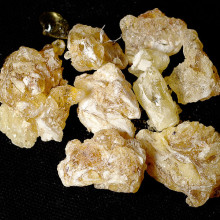
Frankincense treatment for bladder cancer
For thousands of years frankincense has been used in incense and perfumes, and the bible tells that it was one of the gifts the wise men brought to Jesus. And there might now be a new use for Frankincense, to treat cancer of the bladder, a deadly form of the disease - in the US it is the 4th most common type of cancer in men, and it is the 7th most common cause of death among British men.
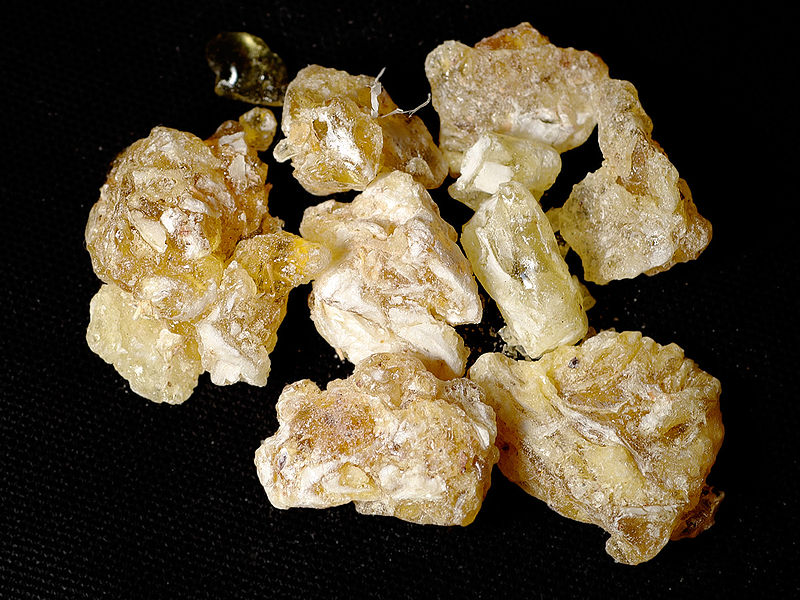 Hsueh-Kung Lin led a team of researchers from the University of Oklahoma Health Sciences Center and Oklahoma City VA Medical Center in the United States who published their study of frankincense in the open access journal BMC Complementary and Alternative Medicine.
Hsueh-Kung Lin led a team of researchers from the University of Oklahoma Health Sciences Center and Oklahoma City VA Medical Center in the United States who published their study of frankincense in the open access journal BMC Complementary and Alternative Medicine.
Various other studies have pinpointed the anti-inflammatory, antibiotic and anti-fungal properties of frankincense as well as its use in combating various other types of cancer cells. Here Lin and the team added frankincense oil to human bladder cancer cells and normal bladder cells in Petri dishes in the laboratory and they found that frankincense singled out the cancer cells and killed them.
Lin and his team identified various genes that were switched on by frankincense oil, and some that were switched off. Among those that were switched on were genes that are known to stop tumour cells from dividing and growing and some that promote cell death in the cancer cells through many different pathways.
Frankincense comes from the resin of various different species of Boswellia tree, including species that are native to India, China, Somalia and East Africa. To harvest it, the tree bark is cut and the white, milk-like gum oozes out. When it hardens it turns orange/brown and that is frankincense. The oil is made by stream distillation of the resin.
This is the first evidence that frankincense is effective against bladder cancer cells so it is still early days. More tests are needed on other human cancer cells lines and scientists will need to be sure there aren't other unwanted side effects of the oil. But it is certainly encouraging that frankincense could at some point in the future be used as an alternative therapy for people suffering from bladder cancer.
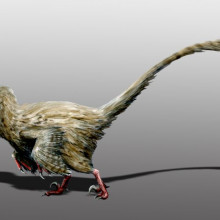
Miniature meat-eating dinosaur discovered
A new species of miniature meat-eating dinosaur has been discovered in North America, where it is the smallest-known dinosaur. Hesperonychus elizabethae was half the size of a modern day house cat and it ran around on two legs hunting for insects and other small animals like frogs and mammals and possibly even baby dinosaurs.
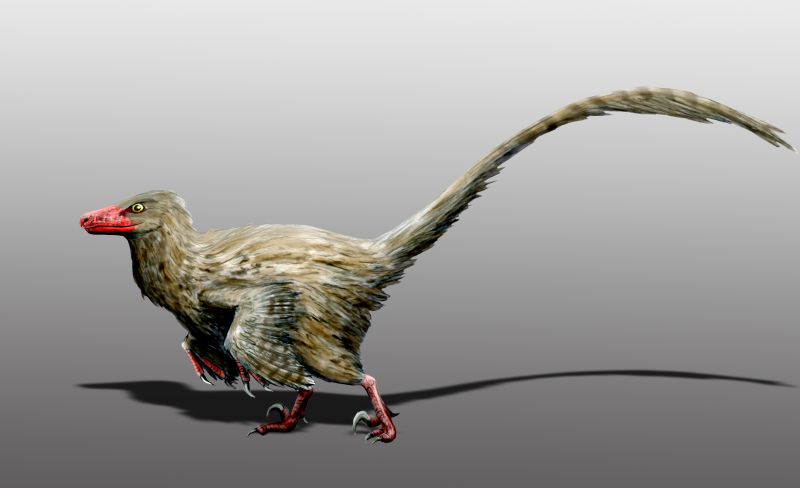 This is the discovery of two Canadian palaeontologists, Nick Longrich from the University of Calgary and Philip Currie from the University of Alberta, in a study published in the Proceedings of the National Academy of Sciences.
This is the discovery of two Canadian palaeontologists, Nick Longrich from the University of Calgary and Philip Currie from the University of Alberta, in a study published in the Proceedings of the National Academy of Sciences.
This newly discovered species looked a little like the velociraptors made famous by the movie Jurassic Park, but much smaller. Their name Hesperonychus means 'western claw' because of the razor-sharp, sickle-shaped claws on its second toe. They were about 50cm tall, with a slender head and dagger-like teeth. They lived in marshes and swamps that covered parts of Canada during the Cretaceous period between about 145 and 65 million years ago.
The fossils were originally collected in 1982 and the most important specimen was a pelvis bone collected by a well-known Canadian palaeontologist Elizabeth Nicholls, who died in 2004 and after who this new dinosaur was named. But the bones remained in storage and unstudied until Longrich came across them in 2007.
Originally they did think the fossilized claws were from young dinosaurs but when they started studying the pelvis bone they found that the hipbones were fused which would have only happened when the animal was fully grown.
These small carnivores were in fact quite common, a discovery that unveils how for the last hundred years palaeontologists have been missing an important part of these ancient ecosystems. It raises the possibility that there could be even smaller meat-eaters out there waiting to be found.
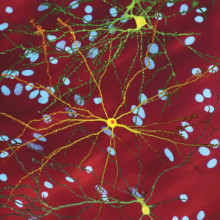
22:04 - This Week in Science History - Discovering the Huntington's Gene
This Week in Science History - Discovering the Huntington's Gene
Sarah Castor-Perry
This week in science history saw, in 1993, the discovery by a team in America of the single gene involved in Huntington's disease; a neurodegenerative disorder that causes characteristic jerky movements, loss of memory and muscle control. It is rare, affecting only 7 in 100,000 people - compared to 1 in 3 for cancer, but it is more common than some other genetic diseases, such as achondroplasia (or dwarfism) that affects only 4 in 100,000.
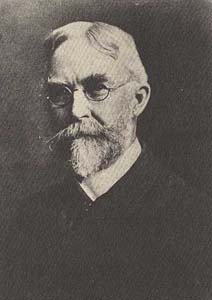 Huntington's was one of the first genetic diseases to have its gene sequence mapped - following the sequencing of the gene for cystic fibrosis in 1989.
Huntington's was one of the first genetic diseases to have its gene sequence mapped - following the sequencing of the gene for cystic fibrosis in 1989.
Gene sequencing began in the 1970s, working on viruses, particularly ones called bacteriophages - viruses that attack bacteria. By 1991, when the Human Genome Project began - it's aim to sequence the entire human genome - sequencing was accurate but still relatively slow.
But first, a short introduction to the genetics of Huntington's. Humans have all their DNA arranged in 23 pairs of chromosomes - one pair of which is the sex chromosomes, the X and Y that determine what gender you are.
The group that worked on the Huntington's gene found that it was located on chromosome 4. The gene itself codes for a protein called Huntingtin, which is essential for brain development and helps to produce a chemical that encourages nerve cell growth.
Proteins are made up of amino acids, and DNA contains the information on which amino acids to put into which order for every protein in our bodies. This order is determined by combinations of the *bases* adenine, thymine, cytosine and guanine, or A, T, C and G. Each amino acid is coded for by three of these bases - for example GGA codes for glycine.
At one end of the huntingtin gene, there are several repeats of the bases CAG, which leads to a chain of glutamines on the end of the Huntingtin protein. In people with the normal copy of the gene, there can be up to 36 of these CAG repeats, but in those with the mutant form, there can be as many as 70 or more.
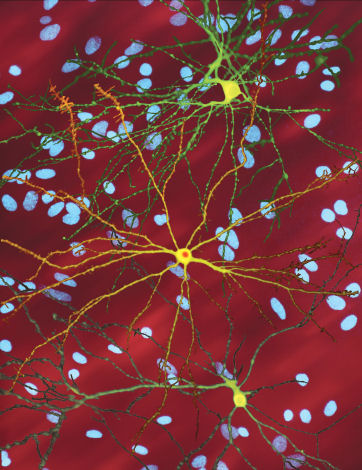 When there are this many glutamines on the end of the protein, it changes shape and can no longer perform its job properly - meaning that the nerve cells in the brain that rely on it to make and maintain new connections can degenerate and die, especially in the areas controlling movement - causing the movements that give the disease its other name of Huntington's Chorea, and loss of coordination then eventually loss of muscular control throughout the body.
When there are this many glutamines on the end of the protein, it changes shape and can no longer perform its job properly - meaning that the nerve cells in the brain that rely on it to make and maintain new connections can degenerate and die, especially in the areas controlling movement - causing the movements that give the disease its other name of Huntington's Chorea, and loss of coordination then eventually loss of muscular control throughout the body.
The group also found that the number of repeats determined when in life the disease would start - between 36-45 repeats and you might never realise you had it as it would start so late in life you would probably die of something else first. With over 45, the disease usually manifests in your 40s, and with over 70, juvenile HD develops, with all the symptoms appearing in teens or 20s, and progressing rapidly, leading to early death.
Since this paper was published, genetic sequencing has come on in leaps and bounds, with the Human Genome Project completed ahead of schedule in 2001. Many other genetic disorders have been sequences. This allows for testing methods to be developed - for adults and for pregnant women who may want to terminate a pregnancy if the child would have a genetic disease. In the developing fields of gene therapy and RNAi it also allows affected genes to be pinpointed and targeted for therapy and treatment. In the future, it may be that we can treat all genetic diseases, with these early discoveries providing the beginnings of an important series of breakthroughs...
The paper is available here: Macdonald, M (March 1993). "A novel gene containing a trinucleotide repeat that is expanded and unstable on Huntington's disease chromosomes. The Huntington's Disease Collaborative Research Group". Cell 72 (6): 971-83. doi:10.1016/0092-8674(93)90585-E.
Related Content
- Previous Zinc: Chemistry in its element
- Next Computer Science









Comments
Add a comment